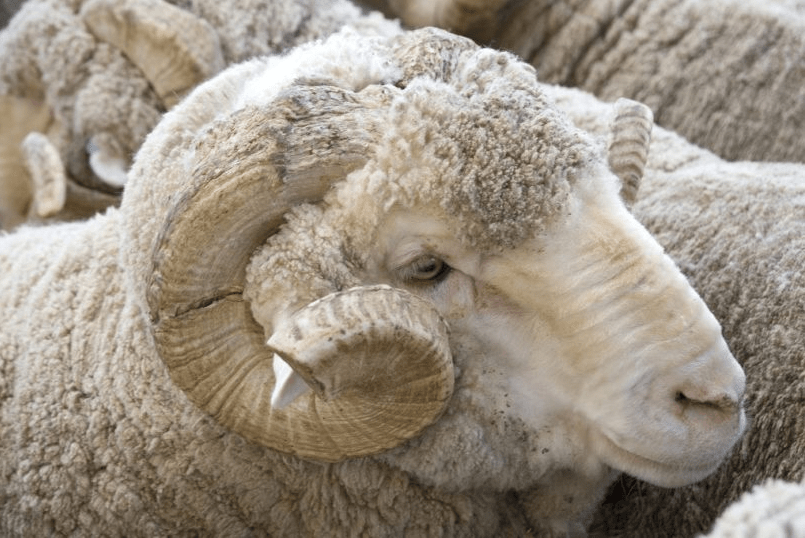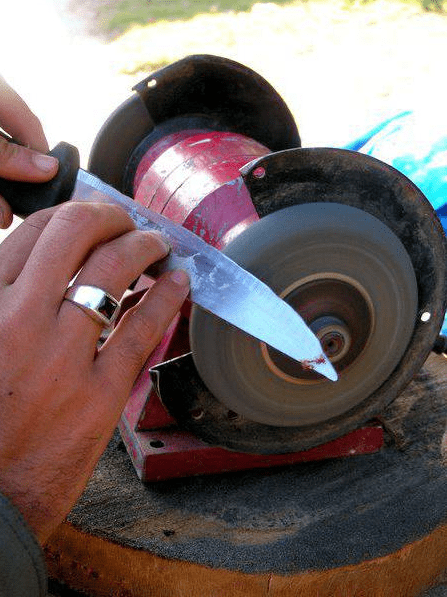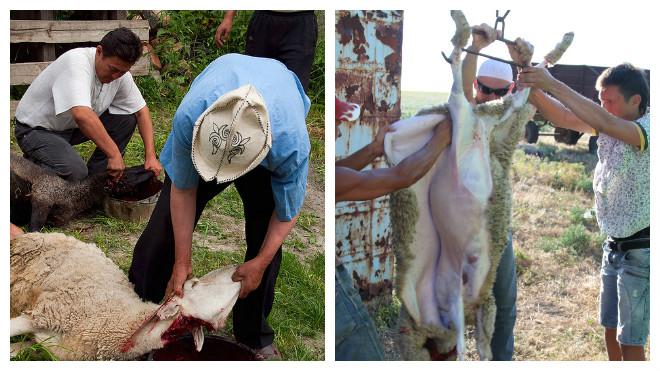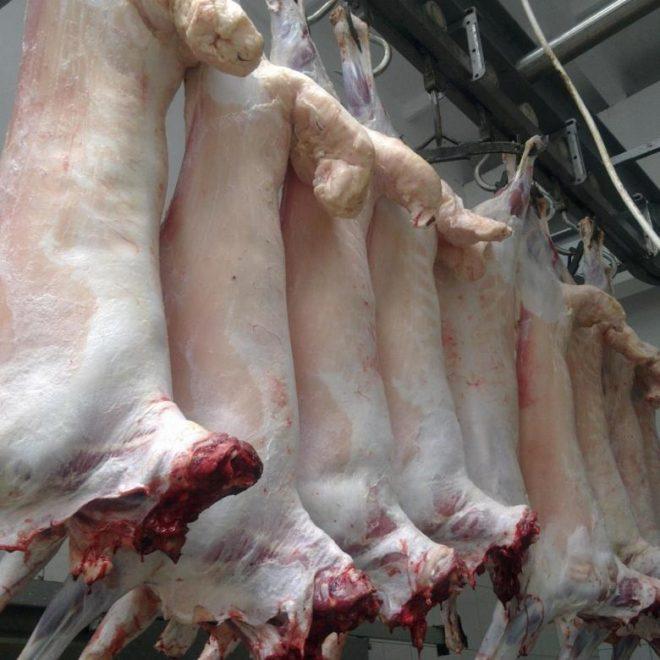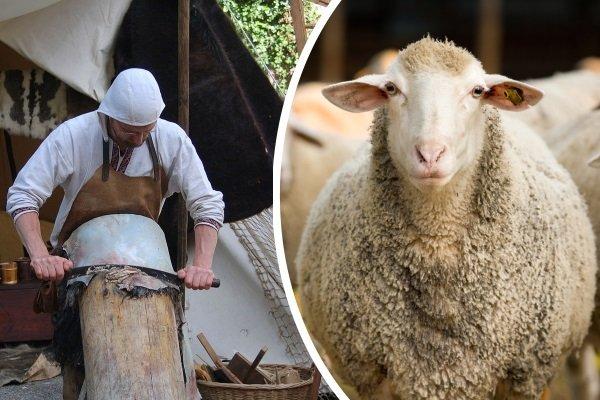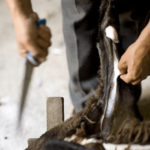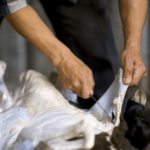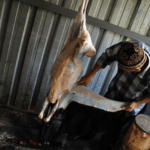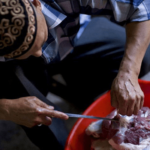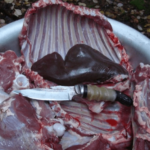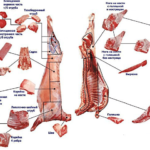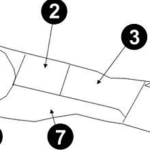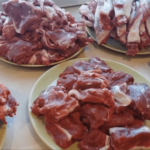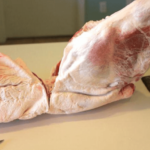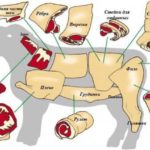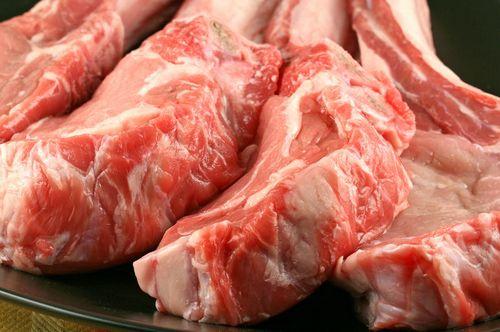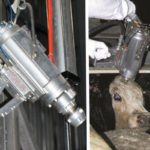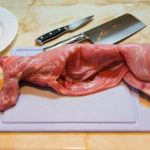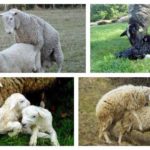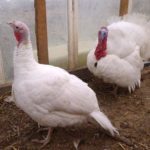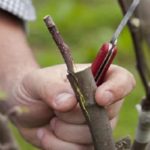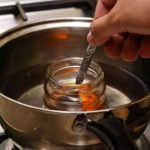What method, how to properly butcher a lamb or sheep - a similar question is asked by many who do not trust the choice and preparation of meat to strangers. In fact, knowing the nuances of cutting, coping with the task is not so difficult. Armed with this knowledge, it is easy to sort the meat depending on your needs - for barbecue, soup or roast. At the same time, the animal will be spared unnecessary suffering if it is immobilized and slaughtered correctly.
Preparing to slaughter a sheep
The first step is to organize your workplace. Near the site where the animal will be slaughtered, you should prepare in advance tools, clean rags, water (provide access to a running water supply), including dishes. You will also need salt, it will help preserve the meat and prevent it from spoiling.
Knives should be sharpened carefully; it is better to do this in advance and not rush on the day of slaughter. It is equally important to prepare the animal. In order for the meat to be free of unpleasant odor, the sheep should be put on a diet and limited in food.
Hints and tips on cutting can be found in the video:
Required Tools
Pre-prepared knives brought to razor sharpness are half the success. In total, 2 of them are usually used:
- Straight.
- Folded.
The first is needed for actually slaughtering the ram, cutting the carcass, and cutting the meat into pieces.
The second is for skinning. You can get by with just one knife, but it’s more convenient to work with two. If the ram will be slaughtered or butchered by weight, then a hook for hanging and a rope (cable) will be needed.
Workplace
For slaughter you need a flat, clean area, free of debris and foreign objects. The same applies to the desktop. It must be washed and thoroughly cleaned. You can cover the surface with film or oilcloth, this will make it easier to clean the table after cutting.
Preparing the animal
Another important step. If you plan to use wool or skin, the animal is sheared several weeks in advance. This step can be skipped if there is no need to obtain wool.Approximately 24 hours before slaughter, the ram is no longer given food, without being denied water. This approach will cleanse the intestines of excrement, and the meat will get rid of the unpleasant odor. Drinking plenty of fluids will also improve the quality of your lamb.
Slaughter rules
First you need to immobilize the animal. Several methods are used for this; electric shock remains the most popular. The legs must be tied. Sometimes this stage is enough for professionals, and then simply slaughter the ram or cut its artery.
One of the goals that the slaughterer must achieve is to take the animal's life quickly and in the least painful way. There are large arteries on the ram's neck that can be cut instantly and release blood. It is best to do this by sharply tilting the animal’s head back, while simultaneously holding it in an immobilized position.
Next, a sharp and deep cut is made with a sharpened knife, so that the throat is cut from ear to ear. Then you need to hang the carcass to drain the blood. Bleeding is necessary, since this method avoids spoilage of meat and improves its quality. The ram is left hanging for 10 minutes.
Methods
Professional slaughterers practice several methods of slaughter. Regardless of the method chosen, the ram must be prepared according to all the rules. Next, use 3 driving options:
- on the side;
- suspended;
- in Buryat.
If you choose the first method, you will definitely need an assistant to slaughter the animal. The ram is hobbled, laid on its side and positioned so that its legs are not towards the slaughterer, but away from him. You need to quickly, in one motion, cut the ram's throat. You can't cope here without preparation and experience.
The method of slaughtering a sheep by hanging the animal is often practiced. To implement it, you will need a structure of 2 racks and a crossbar attached to them. This can be a ready-made structure or specially organized before slaughter. This way the skin and carcass get dirty the least. The design must be designed for the weight of the ram, have proper stability and reliability.
The last method (Buryat) is considered inhumane and even cruel. Its essence is as follows: in a certain place, opposite the animal’s heart, a small incision is made into which you need to insert your hand or a wooden stick.
Next, you should not slaughter the animal, but press on the heart valve so that the organ stops. The death of the ram will not occur immediately, so this method is rarely recommended for untrained slaughterers.
Immobilization of an animal
Before chopping or cutting the throat of a ram, you need to immobilize the animal. This is done for 2 reasons: to avoid prolonged agony, torment of the ram (in convulsions, animals can kick or hit their heads) and not to stain the skin or meat.
If electric shock is used, the ram need not be tied up. A high voltage electrical discharge will render the animal unconscious. The only thing left to do is cut his throat.
Slaughter and bleeding
To quickly and least painfully kill a ram, most often its throat is cut. Depending on the experience of the slaughterer, you can slaughter the animal on its side, hanging it from a crossbar or hook, and piercing the heart with a special knife. Be sure to let out the blood so that the meat lasts longer.
To do this, the carcass is suspended by the hind legs and left in this position for 10 minutes. When the blood comes out, you can start cutting up the ram.
How to butcher a sheep carcass
First of all, this stage is labor-intensive: it accounts for most of the time spent, if we evaluate the slaughter procedure as a whole. Using simple rules, you can quickly and accurately cope with the task.
First the skin is removed. A flat, extended surface is best suited for this purpose - a table or a large clean sheet of metal. As a last resort, you can work on the floor in a house or garage, having previously covered it with film or oilcloth.
Skinning
Before skinning a sheep or ram, prepare the area. Then the carcass is laid on its back, then a small (about 3 centimeters) incision is made on any of the legs, so as not to touch the muscles, only the skin. Next, a dagger, narrow knife or rubber tube is carefully inserted into the resulting gap. The purpose of the operation is to create a layer of air between the muscle tissue and the outer shell. Then you can displace the formed bubble, achieving complete separation of the lamb skin.
Gradually, air should penetrate everywhere except the sternum. Lightly patting the skin to achieve the desired effect. Professional slaughterers remove the skin without damage, leaving it attached to the muscles only on the back.
All that remains is to hang the ram carcass by the leg, tying it with a rope and finally remove the skin.
Removing the entrails
Before cutting up a sheep carcass of any breed, not necessarily Katum, you should get rid of the entrails and fat. It is recommended to work in a longitudinal direction, moving along the abdominal cavity. When making incisions, the rule is simple: organs should be visible, but they should not be damaged.
Without removing the entrails, further cutting of the carcass is impossible.
Be especially careful with the gall bladder so as not to spoil the meat and entrails. First, a section of the rectum is removed. It should be bandaged immediately. Then an incision is made through the trachea and the esophagus is removed. The lungs and heart are taken out sequentially. The liver must be removed with special care, the same applies to its separation from the gallbladder. On the intestines and stomach there is a layer of fat, the omentum.
Cutting scheme
When cutting a lamb carcass, several schemes are used. One of them involves cutting the ridge so that there are 2 approximately equal halves - front and back. It is very important to precisely dissect the spine along the cartilage tissue, and not crush it anywhere.
At the next stage, they begin to work with the back part: first, the fat of the tail is removed. The legs should be carefully loosened at the joints to separate them from the carcass. The hindquarters and femur are separated by acting along the acetabulum. The front part is cut in the same way. When the legs are separated, proceed to the ribs, cutting them off from the spine.
To prevent the meat from smelling like fat, you can separate it completely, resulting in lean lamb. If someone likes it fatty, you can leave a layer. Under no circumstances should you throw away sheep fat; it is extremely healthy. The cutting of the carcass itself is shown in the diagram. You can also cut up lamb.
A simplified type of cutting includes a slightly smaller number of operations. The diagram shows:
- Neck.
- Korean.
- Saddle.
- Hip.
- Spatula.
- Brisket.
- Pashina.
Lamb meat should be processed quickly - salted, frozen or eaten.
The same applies to the skin so that it does not disappear.
For clarity, the stages are shown in the video:
Preserving the skin
A thrifty owner should never lose anything.The sheep skin can be saved and used in the future. The following preservation methods are usually used:
- Wet.
- Dry.
Both will require a lot of salt. According to the first method, the sheep skin is laid out in the shade and thickly sprinkled with salt. As soon as the salt is absorbed, the procedure is repeated. After 3 days the skin rolls off, you need to start from the neck part. According to the second method, after sprinkling, the fleece is hung in the fresh air, and the temperature should not exceed 20 degrees. If salt is combined with mothballs, the sheep skin will be reliably protected from pests.
Meat quality categories
To classify lamb, 2 categories are used - first and second. They differ in the amount of fat and the appearance of the carcass. The first category includes lamb, in which the muscle layer is clearly visible. Clearances are allowed along the ribs and pelvis.
Another distinctive feature is the sharp protrusions on the dorsal vertebrae.
If the visual quality of the meat is worse, or there are any deviations, then it is assigned to the second category. Tips for cutting and sorting are given in the video:
Common mistakes
Typical mistakes of inexperienced sheep slaughterers include improper preparation of the sheep for slaughter (failure to keep it without food) and unsuccessful cutting of the arteries.
They also often forget to let out the blood and cut up the sheep carcass incorrectly. All these problems can be solved by gaining experience, accuracy, and thoroughness in performing operations.


